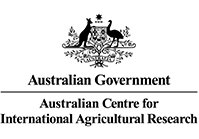
Pacific Pests, Pathogens & Weeds - Mini Fact Sheet Edition
Hibiscus lesser snow scale (346)

Summary
- Widespread distribution. On fruit trees, shrubs and ornamentals, e.g., citrus, hibiscus, coconut, mango, and oil palm, but usually under biological control.
- Sucks sap fron leaves, stems and fruit, weakening plants and causing distortions.
- Eggs laid under cover or "armour", hatching to produce "crawlers" (nymphs); these moult becoming females, up to 2.5 mm long, mussel-shaped, white to light brown, or males, shorter, narrower, and snow-white. Males become tiny fly-like insects, with wings; they are short-lived.
- Spread by crawlers walking, or carried by wind, vehicles, animals, birds, on clothes, and the trade in plants.
- Natural enemies: ladybird beetles, parasitoid wasps (Aspidiotiphagus, Aphytis and others).
- Cultural control: check nursery stock is free from infestation; if present, prune; wide spacing preventing leaves touching and crawlers moving between trees.
- Chemical control: use lime sulphur or wettable sulphur, leaving 30 days if spraying oils (READ INSTRUCTIONS); alternatively, spot-spray infestations with soap solution, horticultural or white oils (see Fact Sheet no. 56); avoid malathion and synthetic pyrethroids - they will kill natural enemies.
Common Name
Lesser snow scale, hibiscus snow scale
Scientific Name
Pinnaspis strachani
AUTHOR Grahame Jackson
1Information from Swaine G (1971) Agricultural Zoology in Fiji. Her Majesty's Stationery Office. London; and CABI (2008) Pinnaspis strachani (lesser snow scale) Crop Protection Compendium. (www.cabi.org/cpc); and from Pinnaspis strachani (Cooley) (1992) Crop Knowledge Master University of Hawaii, Manoa, College of Tropical Agriculture and Human Resources. Photo 2 MAF Plant Health & Environment Laboratory (2011) Lesser Snow Scale (Pinnaspis strachani) PaDIL - (https://www.padil.gov.au).
Produced with support from the Australian Centre for International Agricultural Research under project PC/2010/090: Strengthening integrated crop management research in the Pacific Islands in support of sustainable intensification of high-value crop production, implemented by the University of Queensland and the Secretariat of the Pacific Community.
This mini fact sheet is a part of the app Pacific Pests, Pathogens & Weeds
The mobile application is available from the Google Play Store and Apple iTunes.




Copyright © 2020. All rights reserved.
 Pacific Pests, Pathogens & Weeds - Mini Fact Sheet Edition
Pacific Pests, Pathogens & Weeds - Mini Fact Sheet Edition